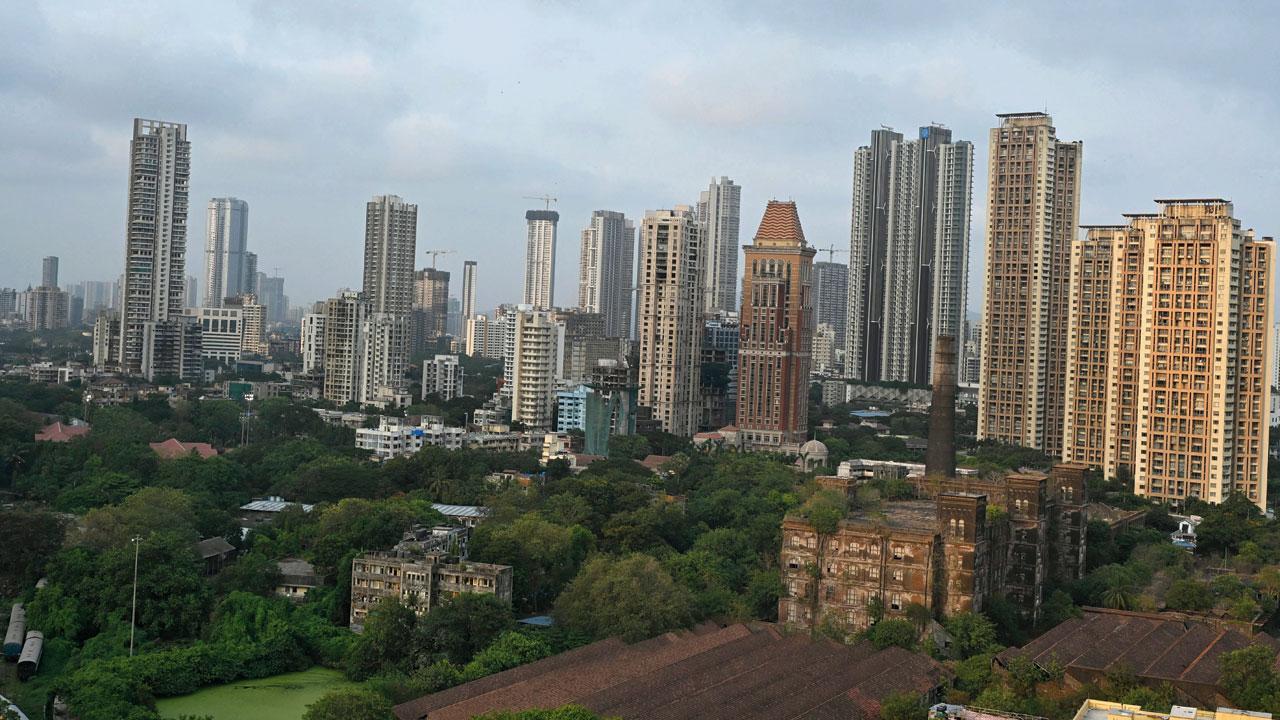It’s hard to believe in the notion of urban planning when there is no proof that the concept exists in Bombay

An overwhelming majority of the country’s urban settlements do not have a masterplan. Representation Pic/Ashish Raje
 I sometimes amuse myself by reading what conspiracy theorists have to say. This is easier than ever before, thanks not only to amplification by social media, but by the anger that drives most people to make poor choices in our age of anxiety and bigotry. One of my recent favourites involves the hate directed towards an urban planning concept called the 15-minute city, or FMC.
I sometimes amuse myself by reading what conspiracy theorists have to say. This is easier than ever before, thanks not only to amplification by social media, but by the anger that drives most people to make poor choices in our age of anxiety and bigotry. One of my recent favourites involves the hate directed towards an urban planning concept called the 15-minute city, or FMC.
The premise is simple enough: Build spaces that offer residents access to daily necessities and services within 15 minutes from any point. The reasons are logical because, when people can get to work easily, shop for necessities and find entertainment or healthcare quickly, their quality of life improves, they are healthier and happier, and sustainable living is more achievable. Naturally, because this sounds great, it was seized upon by far-right supporters in the West as proof that governments wanted to control citizens. They promoted the idea that 15-minute cities would restrict residents from travelling outside pre-determined zones, their homes would turn into open-air prisons, and they would be locked into areas under the pretext of climate change. In short, the kind of lunacy that eventually brainwashes people into electing criminals as their Prime Ministers.
I thought about what Bombay could be like if it were to embrace the notion of FMC, and realised I had no idea if urban planning was ever taken seriously in these parts. I know we have planners, because there have been Development Plans announced regularly for over half a century now, but it’s hard to figure out what they have accomplished.
Development Plans are meant to spell out how multiple agencies manage land contained within the city’s borders, but how is one to know where the Municipal Corporation of Greater Mumbai’s mandate ends and where the Maharashtra Housing Area Development Authority’s remit begins? Then there is the Mumbai Metropolitan Region Development Authority, the Slum Rehabilitation Authority, and a bunch of other agencies tasked with overseeing everything from transferable development rights to how amenities are to be distributed. It sounds chaotic, and is, but what bothers me is the absence of voices from residents living within these boundaries. Do people living in Malad and Kandivli, for example, get a say in how mangroves are to be protected from real estate lobbies? Do people in Wadala get to comment on how their area is being transformed into something called New Cuffe Parade?
Here’s a piece of unsurprising information I stumbled upon while trying to find out more about who plans India’s cities: An overwhelming majority of the country’s urban settlements do not have a masterplan. It makes the unchecked development that is obvious in every major city seem inevitable. Combine this with Bombay’s population density, extensive private land ownership, and traditional apathy, and it’s easy to see why nothing seems to work the way it is supposed to.
Reading about FMC made me wonder how our planners appear to do everything in their power to make life harder than it ought to be. It reminded me of how long it used to take me to get to college, then work, when I was younger. I thought about how, for five days a week, I would put my life on the line alongside millions of other commuters, just so I could get to office at 9 am. Millions have no easy access to hospitals unless they are lucky enough to live alongside one. Entertainment hubs involve hours stuck in traffic, and even the thought of meeting friends comes fraught with the worry of how long it will take to get to their homes and back. What should be taken for granted—easy access and comfortable travel—have never been offered to generations of Bombayites, and probably never will because of how public assets have increasingly been handed over to private interests.
What Bombay’s planners appear to have done instead is create a 15-hour city, where nothing is accessible without a struggle, and the possibility of healthy or sustainable living is impossible to imagine. It’s why even positive signs of development, such as better connectivity engendered by more effective public transport, is undercut by haphazard implementation. Look at what happens to every street and area surrounding each metro station for proof.
I haven’t given up hope though. At some point, I believe more questions will be asked about why living in a big city always has to be such a miserable experience. And who knows, we might even see some real urban planning.
When he isn’t ranting about all things Mumbai, Lindsay Pereira can be almost sweet. He tweets @lindsaypereira
Send your feedback to mailbag@mid-day.com
The views expressed in this column are the individual’s and don’t represent those of the paper.
 Subscribe today by clicking the link and stay updated with the latest news!" Click here!
Subscribe today by clicking the link and stay updated with the latest news!" Click here!








